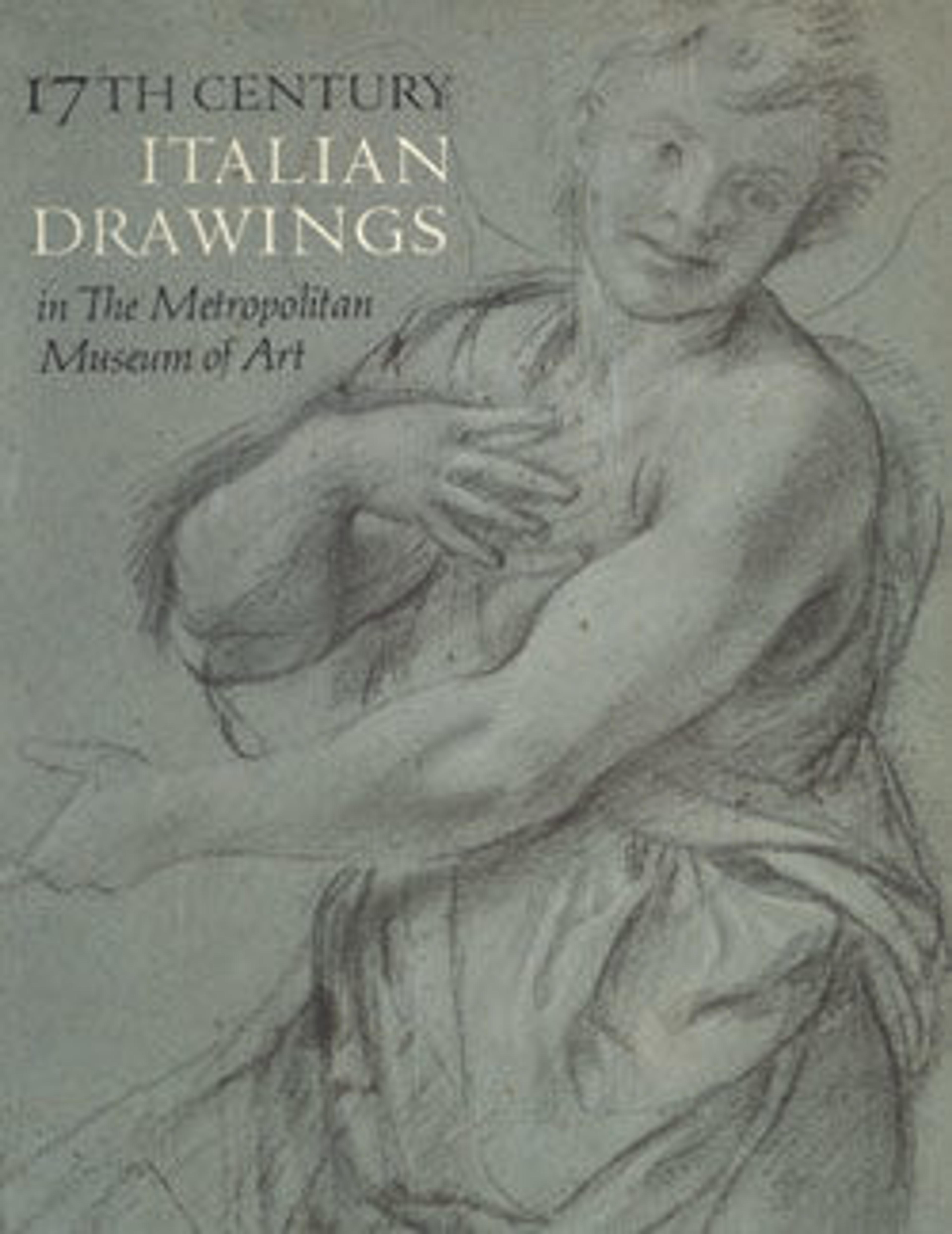Allegorical Figure of Faith
Baciccio designed the frescoes in the vault of Santa Marta al Collegio Romano in Rome about 1672. The decoration was conceived as a series of three tondi, each framed by pendentives with personifications of Virtues. This study is for one of the allegorical figures, Faith. The drawing was identified by Maria Vittoria Brugnoli (1966: see here 'References') as Gaulli's study for the allegorical figure of Faith that appears in a triangular section of the vaulting in the church of Santa Marta al Collegio Romano in Rome. Gaulli was responsible for the overall design of the frescoes in the vault, but only executed the central tondo with Saint Martha in Glory and the Virtues in the four surrounding pendentives (ca. 1672). The two other tondos and the remaining eight pendentives, including that with Faith, are said to have been painted by Paolo Albertoni and Girolamo Troppa (see Enggass 1964, pp. 146-147). Visual evidence that Gaulli was responsible for the design of the whole ceiling was supplied by Maria Vittoria Brugnoli, who published a sheet formerly in a private collection in Vienna with sketches by Gaulli for all three of the circular compositions. Other drawings by Gaulli for the Santa Marta decorations are in the Kupferstichkabinett in Berlin (Dreyer 1969, no. 78, p1. 41; no. 79). A similar figure of Faith occurs in Gaulli's fresco in the vault of the church of Santa Marta al Collegio Romano in Rome.
Artwork Details
- Title: Allegorical Figure of Faith
- Artist: Giovanni Battista Gaulli (Il Baciccio) (Italian, Genoa 1639–1709 Rome)
- Date: 1672
- Medium: Pen and brown ink, brush and brown wash, highlighted with white, over a little black chalk, on brownish paper
- Dimensions: 9-1/8 x 6-7/16 in. (23.1 x 16.3 cm)
- Classification: Drawings
- Credit Line: Rogers Fund, 1965
- Object Number: 65.131.2
- Curatorial Department: Drawings and Prints
More Artwork
Research Resources
The Met provides unparalleled resources for research and welcomes an international community of students and scholars. The Met's Open Access API is where creators and researchers can connect to the The Met collection. Open Access data and public domain images are available for unrestricted commercial and noncommercial use without permission or fee.
To request images under copyright and other restrictions, please use this Image Request form.
Feedback
We continue to research and examine historical and cultural context for objects in The Met collection. If you have comments or questions about this object record, please complete and submit this form. The Museum looks forward to receiving your comments.
